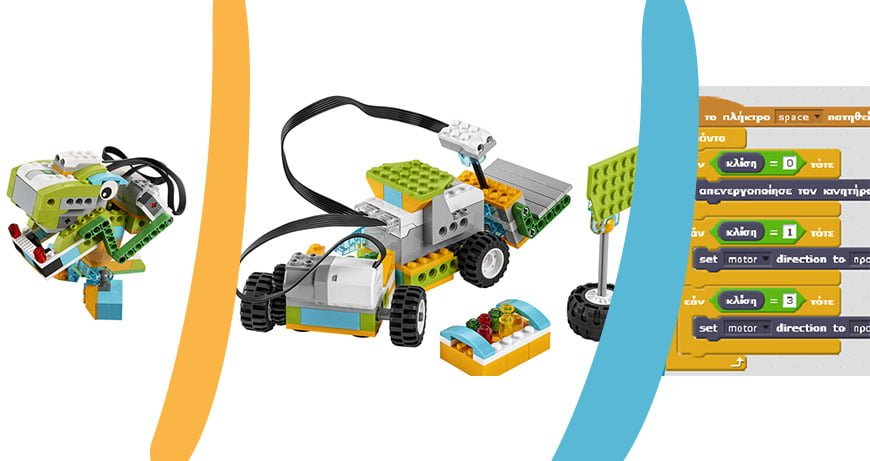The program Educational Robotics with Scratch 2.0 is designed for students of the upper classes of the elementary school and allows them to acquire knowledge about Technology and Engineering through teamwork by building robotic structures, in an unforgettable experience.
Each robotic structure has functional autonomy, designed and implemented using WeDo 2.0 sensors and with the help of Scratch 2.0 special programming scripts that students can easily compile with the drag & drop method while learning to create complex algorithms. All students are guided by specially designed worksheets, which compliment and explain the constructions.
The program is ideal for cultivating students’ interest in Technology and Science by simultaneously providing them with language, social and teamwork skills to address manufacturing challenges, thus releasing their creative forces in building robust, intelligent and autonomous robots.
By following the program, students are fully prepared to take part in the annual Educational Robotics Competitions especially for primary school students.
Cross-curricular knowledge
- Physics: Friction, Velocity, Power, Laws of Mechanics
- Technology: Complex Machines, Autonomous Robotic Structures
- Engineering: mental dipoles – Static or Flexible Structure, Strength or Speed
- Mathematics: Complex Numeric Operations, Pattern Search, Algorithms & Advanced Programming with Scratch
Topics
- Section 1: Brief Introduction & Recollection of Skills in Using WeDo 2.0 Sensors in Automation Construction
- Section 2: Familiarization with the Scratch Scenarios for the functional autonomy of robotic structures (decisions, repeats)
- Section 3: Applying skills to the construction and operation of advanced, original and functionally autonomous robotic structures by selecting either a static & robust construction or a flexible & quick construction
- Section 4: Learning Scratch Scenarios related to the animation of robotic construction in the virtual world of Scratch
- Section 5: Case Studies of Constructions that have been selected in previous Robotics Competitions
